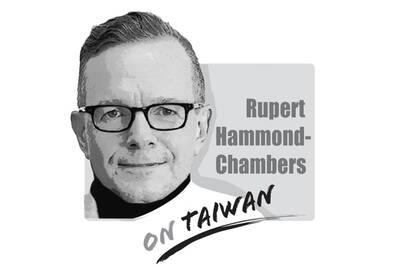The South China Sea peace initiative advocated by President Ma Ying-jeou (馬英九), which calls for joint exploration of resources in the region, stands out among the attempts by the Philippines, Vietnam and especially China to enforce their claims.
However, the approach does not suffice for Taiwan to stake out a position as a constructive player to defuse rising tensions.
The key to changing Taiwan’s marginal role lies in whether it can clarify its stance on the much-disputed “11-dot line,” which later became the “nine-dash line,” employed to demarcate its maritime border since it was first drawn in 1947.
Despite repeated assurances Ma has on various occasions given to critics of the nine-dash line that the nation’s maritime claim is compatible with the UN Convention on the Law of the Sea, which requires that the claims be based on land features, how the claim conforms with international law has never been elucidated. What is more, that Ma always argues that the claim has a historical basis only makes his pledge to adhere to international law preposterous.
Taiwan moved to clarify its maritime claims during the previous Democratic Progressive Party administration, when then-president Chen Shui-bian (陳水扁) in 2005 suspended the 1993 Policy Guidelines for the South China Sea.
However, in Ma’s most recent statement, made when he put forward the peace initiative, he still maintains that, from the perspective of history, geography and international law, the Republic of China (ROC) indisputably maintains that the Pratas Islands (Dongsha Islands, 東沙群島), the Paracel Islands (Xisha Inlands, 西沙群島), Macclesfield Bank (Zhongsha Islands, 中沙群島) and the Spratly Islands (Nansha Islands, 南沙群島), as well as their surrounding waters, are inherent parts of the ROC’s territory.
Making a historically based claim virtually identical to China’s has raised doubts over Taiwan’s compliance with international law. It has also been suggested that Taiwan supports and even coordinates its South China Sea policy with China, which has caused misgivings among other claimants and involved parties over Taiwan’s participation in mechanisms for dialogue on South China Sea issues.
Ma, in response to those concerns, said that it is the People’s Republic of China (PRC) that inherited the historically based claim from the ROC after the former took over China in 1949, not the other away around, but that does not change the fact that possible cooperation between Taiwan and China in asserting sovereignty over the South China Sea is just not in the interests of other claimants and involved parties.
It would only be in Taiwan’s interests to abandon claims not based on land features that it can justifiably lay claim to, in line with international law. Doing so might encourage the concerned parties to either open bilateral dialogue with Taiwan about the demarcation of their overlapping waters or to have Taiwan included in multilateral discussions of South China Sea issues, but of course that would put China in an extremely difficult position to justify its claim.
Although Taiwan effectively administers Itu Aba Island (Taiping Island, 太平島), the biggest island in the Spratly Islands, it has long been an overlooked player in the South China Sea disputes. The marginalization of Taiwan in this arena can be attributed to China’s growing prominence in the region and the “one China” principle that has obstructed Taiwan’s diplomatic activities, but to some extent it is up to Taiwan to be more proactive in its South China Sea policy.
The gutting of Voice of America (VOA) and Radio Free Asia (RFA) by US President Donald Trump’s administration poses a serious threat to the global voice of freedom, particularly for those living under authoritarian regimes such as China. The US — hailed as the model of liberal democracy — has the moral responsibility to uphold the values it champions. In undermining these institutions, the US risks diminishing its “soft power,” a pivotal pillar of its global influence. VOA Tibetan and RFA Tibetan played an enormous role in promoting the strong image of the US in and outside Tibet. On VOA Tibetan,
Former minister of culture Lung Ying-tai (龍應台) has long wielded influence through the power of words. Her articles once served as a moral compass for a society in transition. However, as her April 1 guest article in the New York Times, “The Clock Is Ticking for Taiwan,” makes all too clear, even celebrated prose can mislead when romanticism clouds political judgement. Lung crafts a narrative that is less an analysis of Taiwan’s geopolitical reality than an exercise in wistful nostalgia. As political scientists and international relations academics, we believe it is crucial to correct the misconceptions embedded in her article,
Sung Chien-liang (宋建樑), the leader of the Chinese Nationalist Party’s (KMT) efforts to recall Democratic Progressive Party (DPP) Legislator Lee Kun-cheng (李坤城), caused a national outrage and drew diplomatic condemnation on Tuesday after he arrived at the New Taipei City District Prosecutors’ Office dressed in a Nazi uniform. Sung performed a Nazi salute and carried a copy of Adolf Hitler’s Mein Kampf as he arrived to be questioned over allegations of signature forgery in the recall petition. The KMT’s response to the incident has shown a striking lack of contrition and decency. Rather than apologizing and distancing itself from Sung’s actions,

US President Trump weighed into the state of America’s semiconductor manufacturing when he declared, “They [Taiwan] stole it from us. They took it from us, and I don’t blame them. I give them credit.” At a prior White House event President Trump hosted TSMC chairman C.C. Wei (魏哲家), head of the world’s largest and most advanced chip manufacturer, to announce a commitment to invest US$100 billion in America. The president then shifted his previously critical rhetoric on Taiwan and put off tariffs on its chips. Now we learn that the Trump Administration is conducting a “trade investigation” on semiconductors which